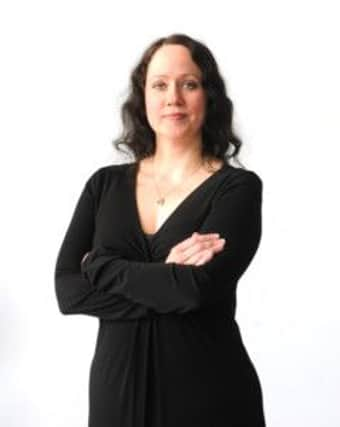Erikka Askeland: Standard bearers for world that works


Too strict and you are bound by them, but too low and you end up booking a hotel where the bedsheets aren’t clean.
Monday will see the annual celebration of World Standards Day. It is a chance for all the people who set standards that most of us rely on – the size of bank cards, the shape of electrical plugs, ladder safety mechanisms – to meet up and give themselves a pat on the back. Unless you are American or Canadian – they celebrate on different days this month. As august bodies whose main focus is to ensure international co-operation, I’m sure they get the irony of this.
Advertisement
Hide AdAdvertisement
Hide AdMostly, we take standards for granted. I realised this on my first trip abroad when I packed my hairdryer.
This was before the days of shops in the airport selling those almost impossible-to-open plastic blister packs containing international plug adapters. Not that I had realised I’d need one. It was only when, hair wet from the shower, I looked at the North American plug, then looked at the British socket, that I thought, damn, this ain’t going to work.
You could argue that the fact I was unable to blow my barnet into sleek shinyness was down to the failure of the international harmonisation of thingamajigs. Except this would be naive. Getting everyone to agree to do anything the same way is incredibly difficult to achieve and the fact that there are only three or four ways to connect electrical goods to mains power around the globe is a triumph of patient human ingenuity over chaos.
You might be unsurprised to learn that it was Britain that invented set standards. The Engineering Standards Committee was the brainchild of the Victorian civil engineer, John Wolfe-Barry, who designed Tower Bridge across the Thames. Quite rightly, he was concerned about making sure structural steel sections were strong enough and came in regular shapes and sizes. Eventually the committee became the British Standards Institute (BSI) and established the Kitemark, that little symbol of trustworthyness that looks like a heart with an “S” in it.
The idea spread like a particularly organised wildfire, with the establishment of the International Organisation for Standardisation in 1947, which now takes in standard bearers for 164 countries and more than 3,000 technical bodies.
Its very name is a mark of dedication to co-operation. According to its website, as “International Organisation for Standardisation” would have different acronyms in different languages (IOS in English, OIN in French for Organisation internationale de normalisation), its founders decided to give it the now ubiquitous short form ISO, derived from the Greek isos, meaning equal. Which is sweet.
Now the appearance of the BSI’s Kitemark, or the EC mark, which is a requirement for goods sold in Europe, means we are saved from the perils of flammable pyjamas. Or novelty condoms. Because it would be unfortunate if you put something on your private parts that made them look like a clown or a chicken and it failed to serve the primary function for which it was designed.
You’ve got to love the people who work to devise standards. Careful and diligent, maybe even a bit fussy, they probably make engineers look like the life of the party. You can laugh at how the specification for making a cup of tea – BS6008 – extends to six pages. And since their humble beginnings at the turn of the 20th century, more than 30,000 British standards cover everything from the design of childrens’ toys to bribery avoidance.
Advertisement
Hide AdAdvertisement
Hide AdBut I believe there is even further scope for their expansion. Why not, for example, create a BSI specification for relationships? It would revolutionise the online dating industry. Lonely hearts adverts would have to include a BS number, or an EC mark, making it much easier to determine if your prospective date was up to your standard. Of course, widgets are much easier to standardise than morals or the human heart. But it doesn’t mean we shouldn’t try to maintain them.